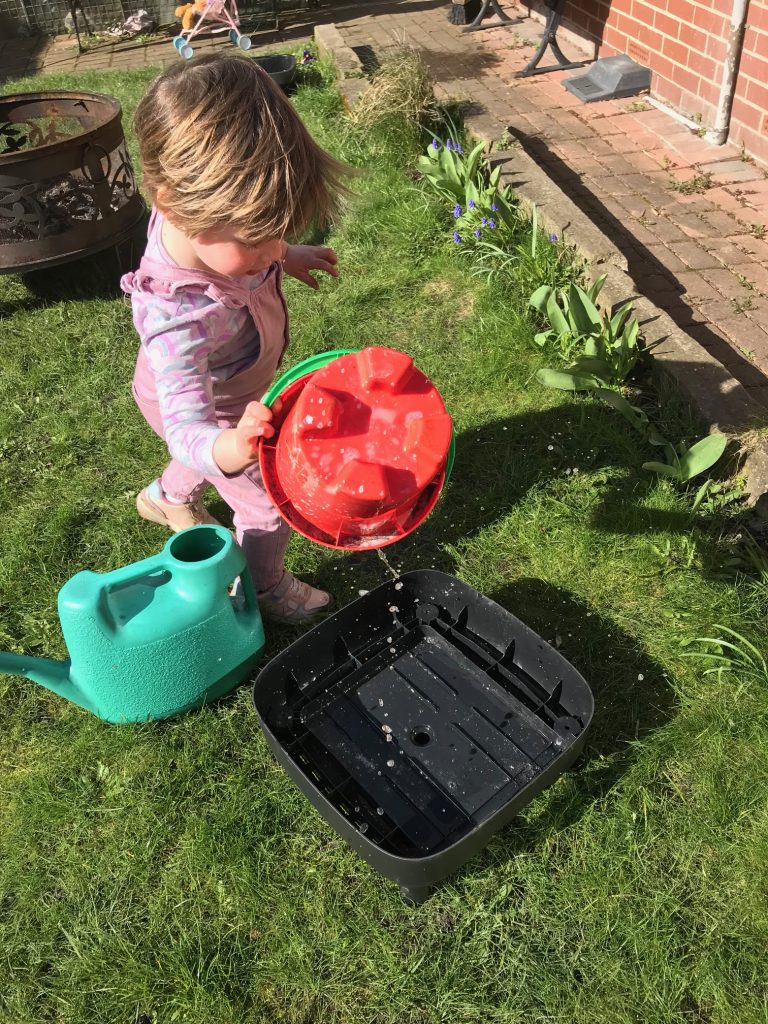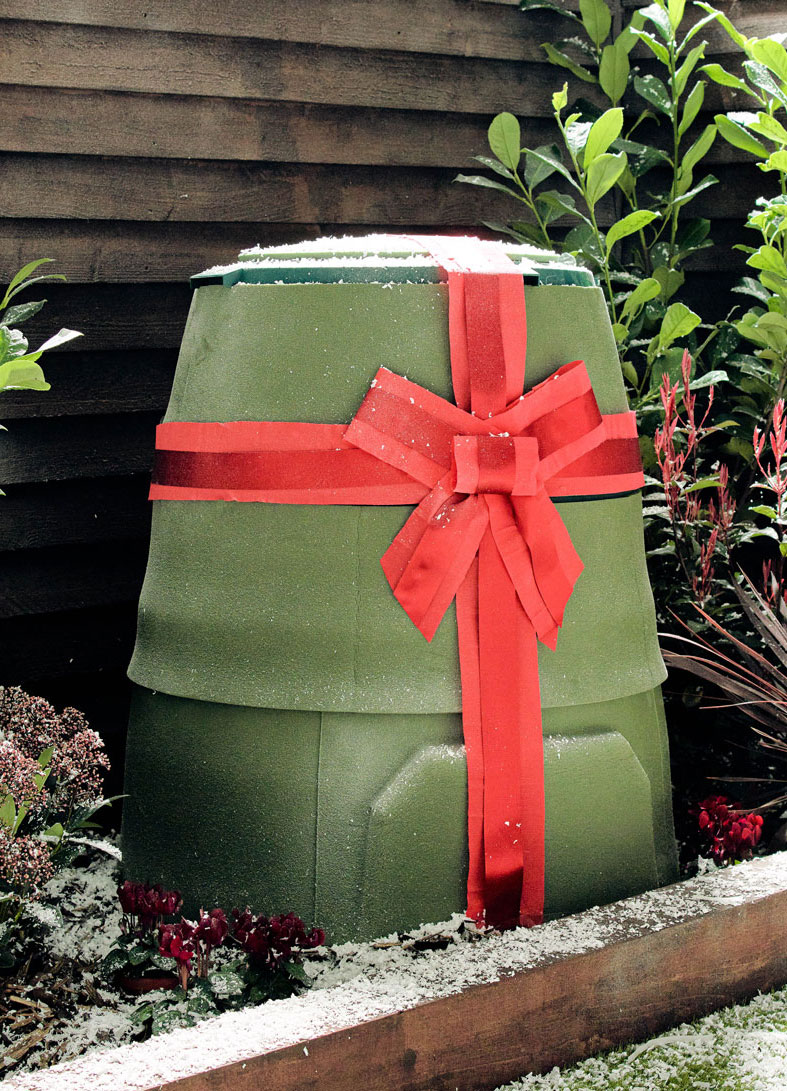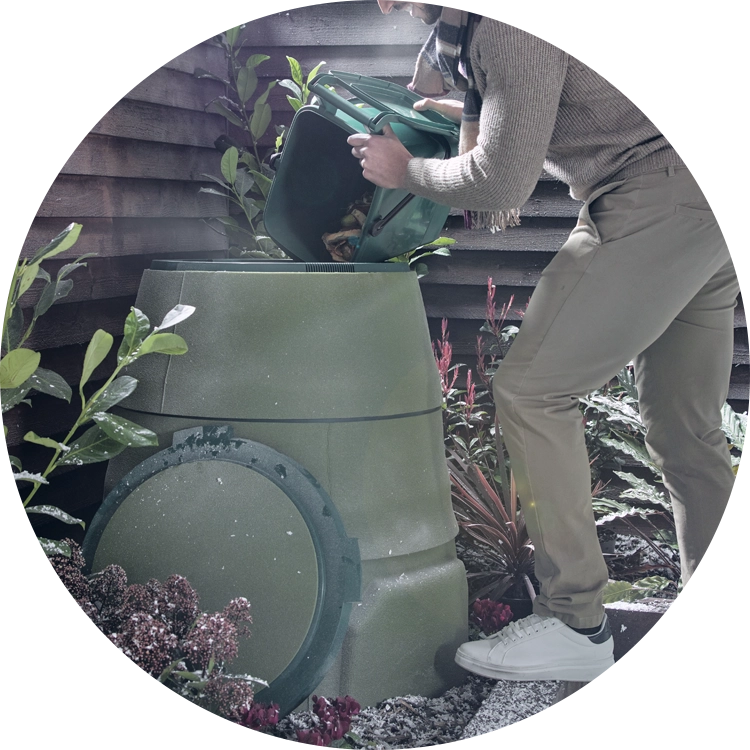Showing that even the youngest of children can rise to the challenges of worm farming, our friend Magdalena, two, stepped in to look after her worms recently.
One day while feeding the worms with her grandparents, she was quick to spot something new – ants. Grandma told her this was due to the worm farm bedding being too dry, creating conditions that appeal to ants.
The solution was to gently add some water. Wormery bedding should be neither wet, nor dry. If you squeezed the bedding material it should feel moist with minimal water dripping out.

So Maggie filled up her watering can and got to work, sorting the worms out and making sure they had conditions just as they like them – moist and dark, covered by a few sheets of newspaper as a blanket (or cardboard, or hessian) to keep them feeling cosy and safe.
Then she sensibly washed her hands – which is when things went a bit wrong. As you can see from the photo, the worms and ants weren’t the only ones getting a bit wet!


Maggie somehow got in the way of the water, whether on purpose or not who can say? It’s all in a day’s work for a two-year-old worm farmer.
For a joke I asked Maggie afterwards if she’d had ants in her pants; with an appalled look she informed me that, no, she hadn’t, because she was wearing a nappy. Fair enough. She thought for a second before adding that Grandma had ants in her pants though. You have to keep an eye on these grandmas.


It’s fantastic to see that Maggie now loves worms. When she first watched her older brother Reggie looking after the worms she was a bit apprehensive and took a back seat but now she appreciates them for the wonderful work they do.
Keeping worms cool
It’s important that wormeries stay moist. In hot weather you can flush your worm farm with half a small bucket of water (5L) once a week to keep conditions moist. When doing this, replace the liquid collection tray with a container that will hold the sudden influx of water.
The moistened bedding sorted out the ants issue for Magdalena, but if you have a repeated problem you could follow this advice shared by wormery guru Mary Appelhof in her book Worms Eat My Garbage:
- Set the legs of the worm farm in coffee cans with mineral oil or soapy water in the bottom. Any ants would get trapped in the oil or soapy water and would not be able to enter the wormery.
And so to bedding
Worm bedding is a major component of a wormery. It has several functions, providing:
- moisture retention
- a medium in which worms can work
- a place to bury food waste
Bedding also provides a carbon source which will feed the worms; they will eventually consume the bedding as well as the food waste.
The bedding provided in the Maze Worm Farm is coconut coir, which is a great choice as it is clean, odourless, moisture-retaining, easy to prepare and worms thrive in it.
Cocount coir, often called coco peat, has a fluffy soil-like texture. It comes compressed in a block that expands when placed in water. Because it has good water-retaining capacities, it can also be mixed with other bedding materials to aid water retention. Coir is a natural by-product of the coconut industry. In the past when coconuts were harvested for their meat and juice, the husk was considered waste until its many uses in horticulture were appreciated.
In the first few days of setting up a new wormery it’s important that the worms acclimatise quickly and they find coco coir to be a hospitable environment thanks to its fluffy soil-like texture. Coconut coir will get your worm bin off to a great start but an established wormery should happily accommodate other freely available carbon sources.
Other suitable bedding materials:
- Shredded newspaper in strips 3-5cm wide. You can use a shredder or tear the strips by hand.
- Leaf detritus from the bottom of a pile of decaying leaves, or compost.
- Wood chips – some wormery enthusiasts report that these are excellent when mixed with leaves or other materials that are capable of holding moisture. Wood chips provide bulk and create air spaces throughout the bedding. You can pick wood chips out when harvesting vermicompost from the wormery and reuse them.
TOP TIP
It can be useful to add a handful or two of soil when initially preparing bedding. This helps to control moisture, acidity and texture as well as adding some grit to aid in breaking down food particles within the worm’s gizzard. It also introduces an inoculum of a variety of soil bacteria, protozoa and fungi which will aid the composting process.
Mary Appelhof is an inspiring champion for worm farming, describing it as a way to ‘save the world – in your own backyard’.
In her book she says that through worm farming you will see mounds of waste converted to material you can use on your houseplants and in your garden.
‘You will enjoy healthier looking plants, better tasting vegetables and money in the bank.’
Let’s end with her wonderful description of the added value that worm farming provides.
‘Hopefully you’ll also gain a better appreciation of the intricate balance and interdependencies in nature. You will be treading more gently on the Earth.
As your gardens are enriched, so is your life and mine. You will have joined the worm-working adventurers who say, ‘Worms eat my garbage.’ Isn’t that a grand beginning to a task that needs to start somewhere? You, personally, can make it happen.’
Julie













